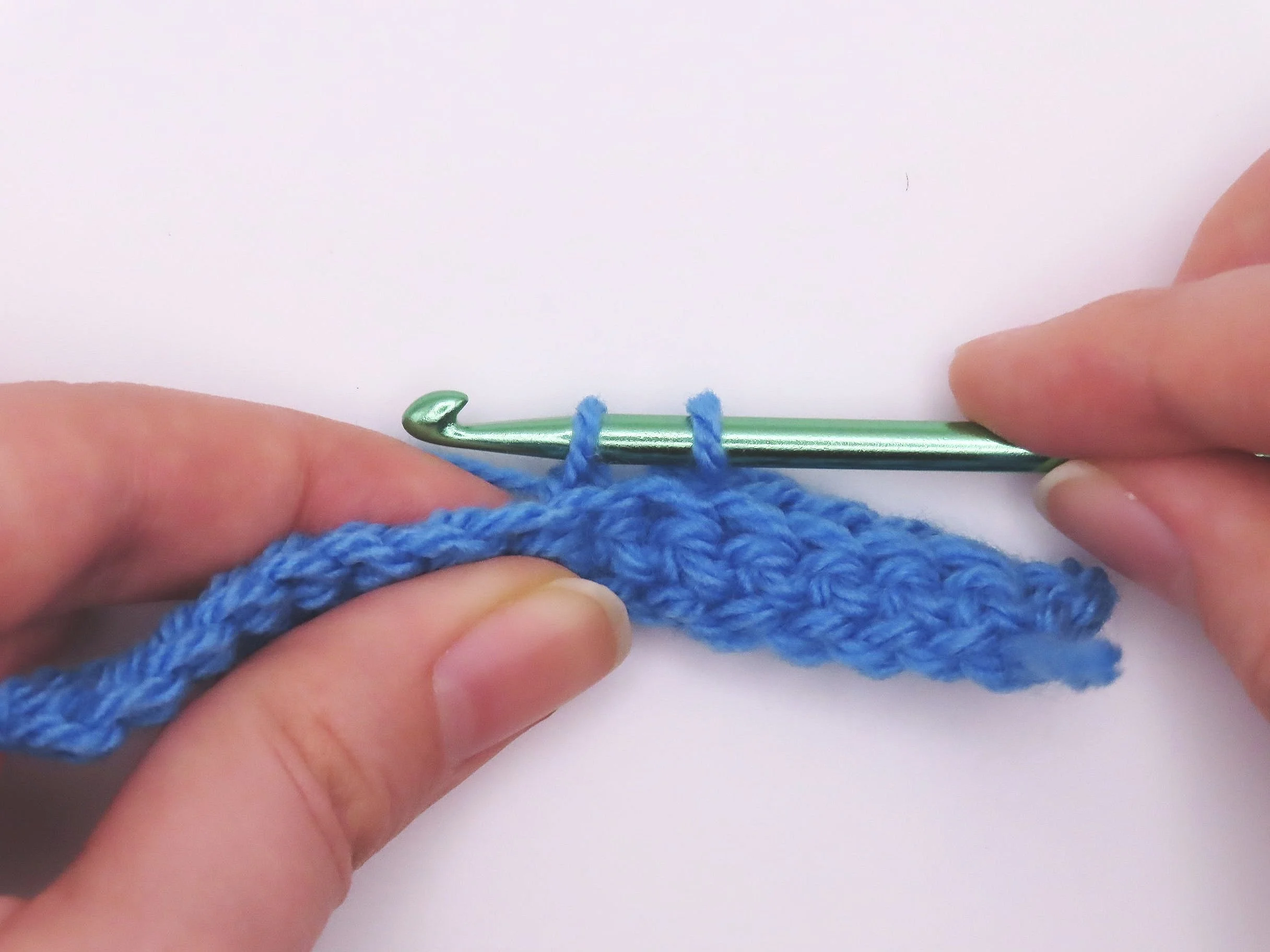Note: These tutorials use UK crochet terms for stitches. Where necessary, the US terms for stitches will be given in brackets the first time they’re mentioned, then the UK terms will be used from then on.
TFBL vs TBL in Crochet
In some crochet patterns, the instructions might tell you to work “TFBL”, “through front and back loops” or “through both loops”; conversely, they might tell you to work “TBL” or “through back loops only”. They might even tell you to alternate between the two.
So What Are They Talking About?
Let’s take a look at a row of double crochet (US single crochet) stitches. Looking at the top of each stitch, you will see there are two strands of yarn running almost parallel to each other. These are the “loops” that you’re working with:
Learn how to make a double crochet stitch here.
So, to work through front and back loops (TFBL), when you make a new row of doubles into these stitches, put your hook under BOTH loops of the stitch in the previous row:
Usually, if a pattern doesn’t specify either way, you’ll probably be expected to work through both loops like this.
To work through back loops only (TBL), when making your new row of doubles, put your hook through ONLY the loop on the “wrong side” of the piece (the side that will be at the back/underneath/inside the piece):
You’ll notice this produces a ridge on your piece of crochet, comprising of the unworked front loops from the previous row.
If you’re working in spiral rounds, the “wrong side” will usually be the one furthest away from you, and this will stay the same as you work. For working in back-and-forth rows, the loop on the “wrong side” will alternate between the loop closest to you and the loop furthest away from you, so keep an eye on which side is which, so the ridges are all on the same side.
Spiral rounds
Back-and-forth rows
You can learn how to make the double crochet and other fundamental stitches here.
If you’ve got the hang of this, check out some guides for other useful crochet techniques here.
Got a question? Get in touch at koalamea.crafts@gmail.com.













